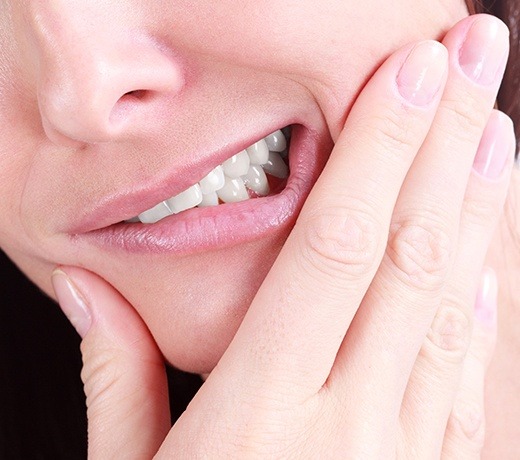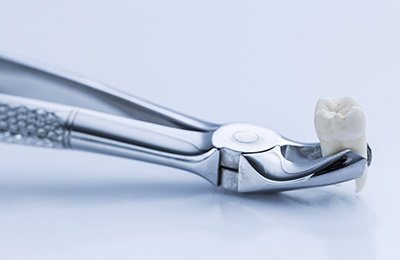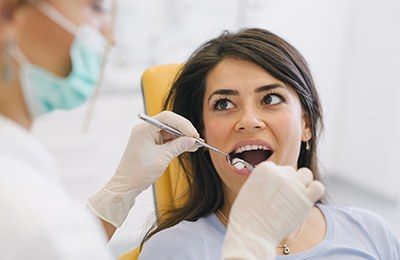At Ultimate Dental, we want our patients to be able to keep all of their natural teeth for a lifetime, but there are some situations where a tooth extraction is simply unavoidable. If you or a loved one ever need a tooth removed, you can trust Dr. Hadad to provide a safe and pain-free procedure thanks to her years of experience and use of the latest technology. Afterward, most patients can’t believe how easy the treatment actually is!
Tooth Extractions – Brownstown
No-Stress Tooth Extractions

Why Choose Ultimate Dental for Tooth Extractions?
- Patient comfort is priority #1
- Highly-skilled & experienced team
Why Do I Need a Tooth Extracted?

There are many reasons why Dr. Hadad may recommend a tooth extraction. The primary one is extensive decay. A tooth can develop a cavity so large that it cannot be adequately repaired with a filling, inlay, onlay, or dental crown. In these cases, extracting the tooth is the only way to prevent the infection from spreading and affecting the surrounding teeth.
They may also choose to remove a tooth that has become impacted, or stuck while trying to erupt. This often happens with the wisdom teeth. As they try to come in, they can put pressure on the back teeth, causing pain, crowding, and even an infection. Removing these disruptive teeth ensures that the smile will be able to function as normal for years to come.
And lastly, a tooth may need to be extracted to create more room in the mouth for a denture or upcoming orthodontic treatment. Extracting any remaining damaged teeth before placing a denture is very common to guarantee a secure fit, and creating more space in the mouth for the teeth to shift can help aid in the success of orthodontics.
How is a Tooth Removed?

Dr. Hadad will first numb the area with local anesthetic until you basically can’t feel a thing. Most patients describe feeling a bit of pressure during an extraction, but never pain.
If a tooth has already erupted into the gum line, Dr. Hadad will simply hold it with a pair of dental forceps and slowly rock it back and forth until it slips out on its own.
Or, if the tooth is impacted, she may need to remove any gum or bone tissue that is holding it in place before actually extracting the tooth.
Tell Me about the Recovery from Tooth Extraction

Some bleeding and swelling is normal after a tooth extraction, and Dr. Hadad will dress the treatment area with some gauze. For extractions involving larger teeth or minor surgery, she will place a few self-dissolving stitches in the area.
Right after the procedure, a patient will be asked to apply a cold compress to their face to help reduce any swelling. For pain, they can take an OTC-medication like ibuprofen or acetaminophen
A patient will be asked to stick to a soft food diet for the first few days. And, for the first 24 hours, a patient should also avoid drinking through a straw, as this can disrupt the clotting process. After a few weeks, the gums should be completely healed, and if necessary, Dr. Hadad can help a patient decide how they want to replace the tooth.
